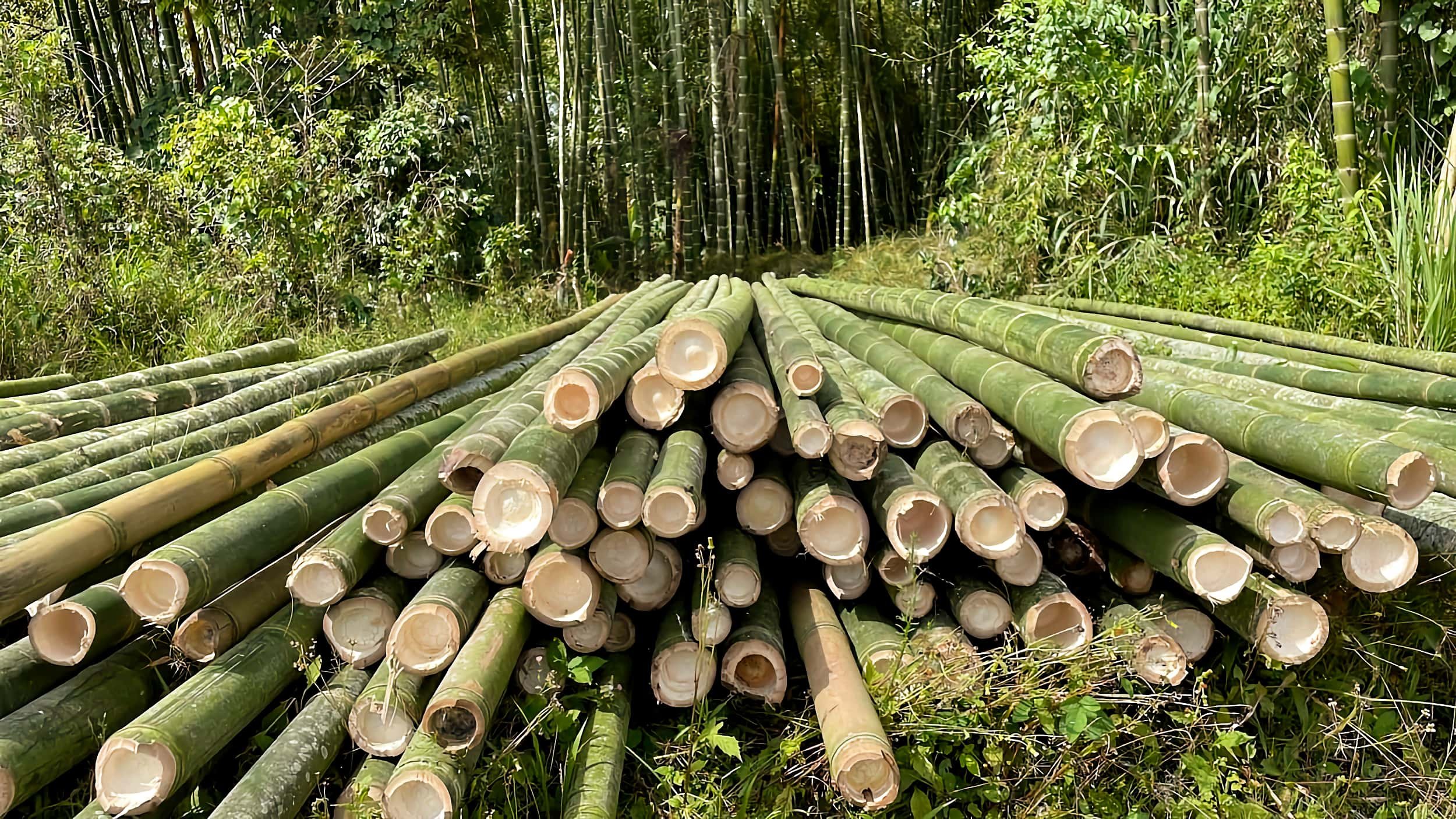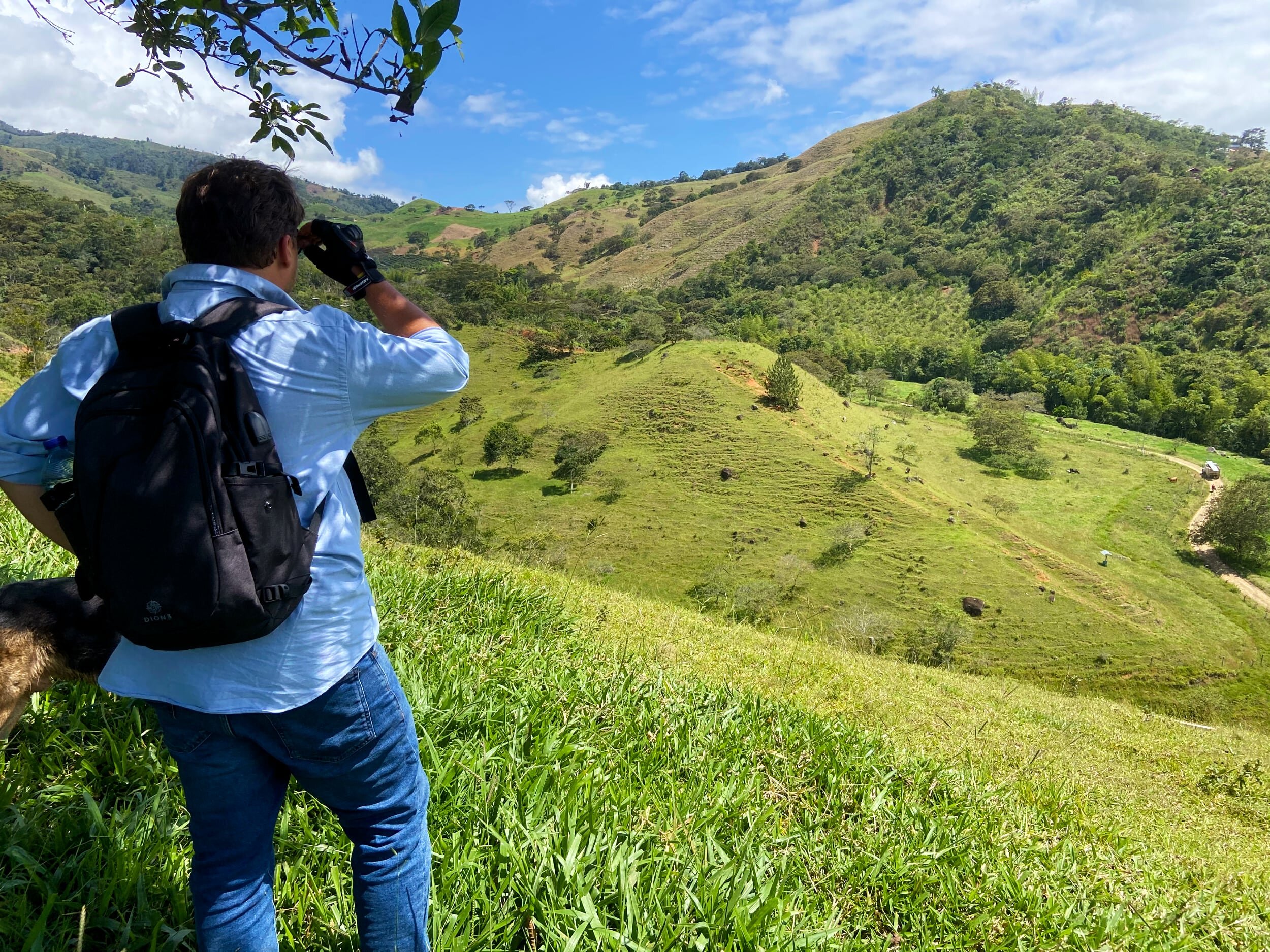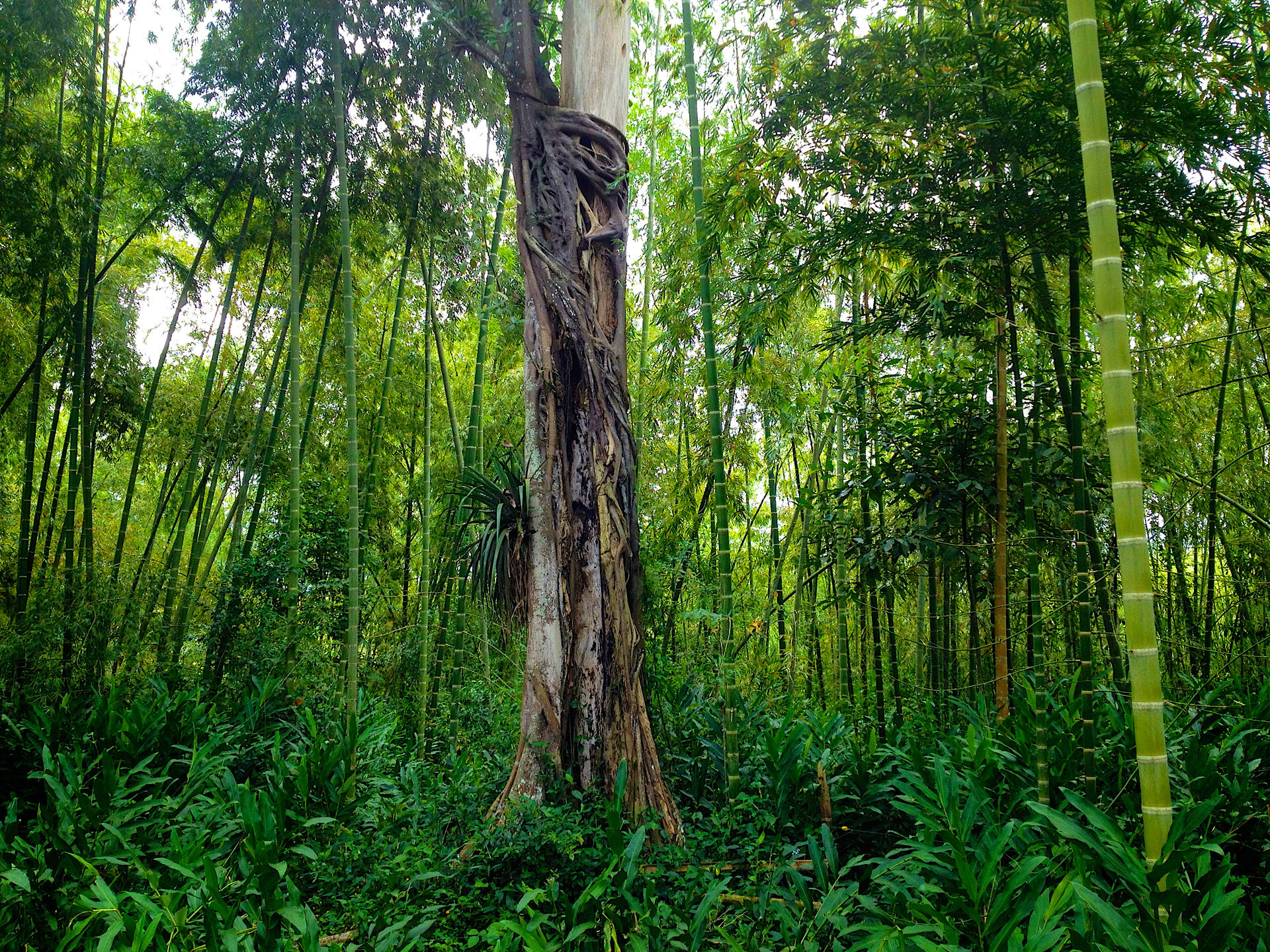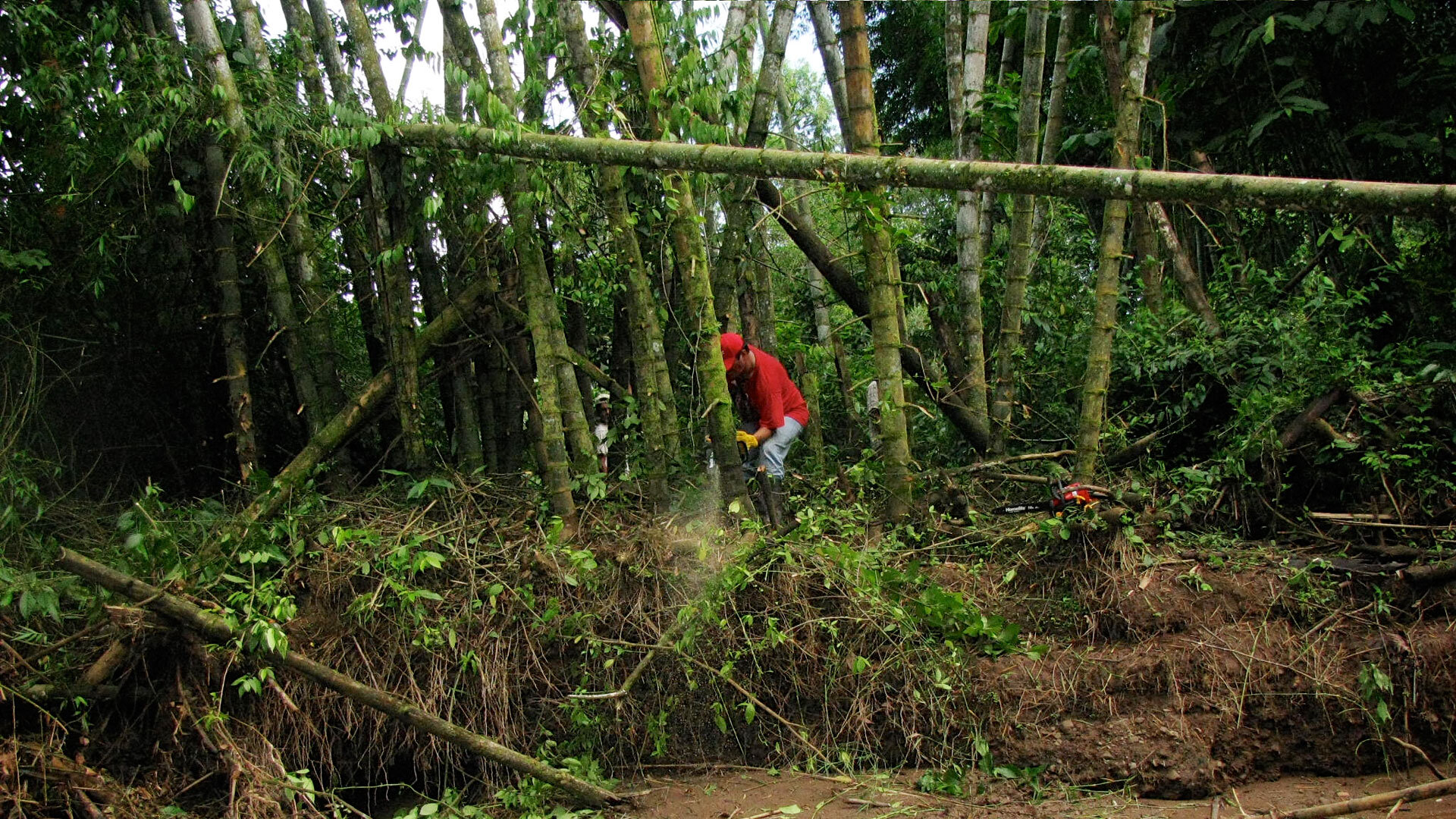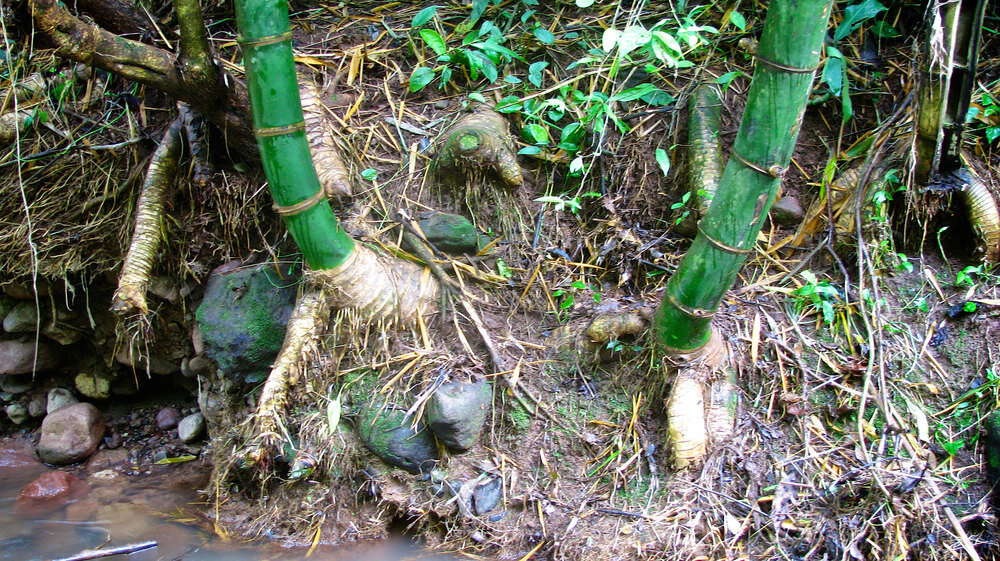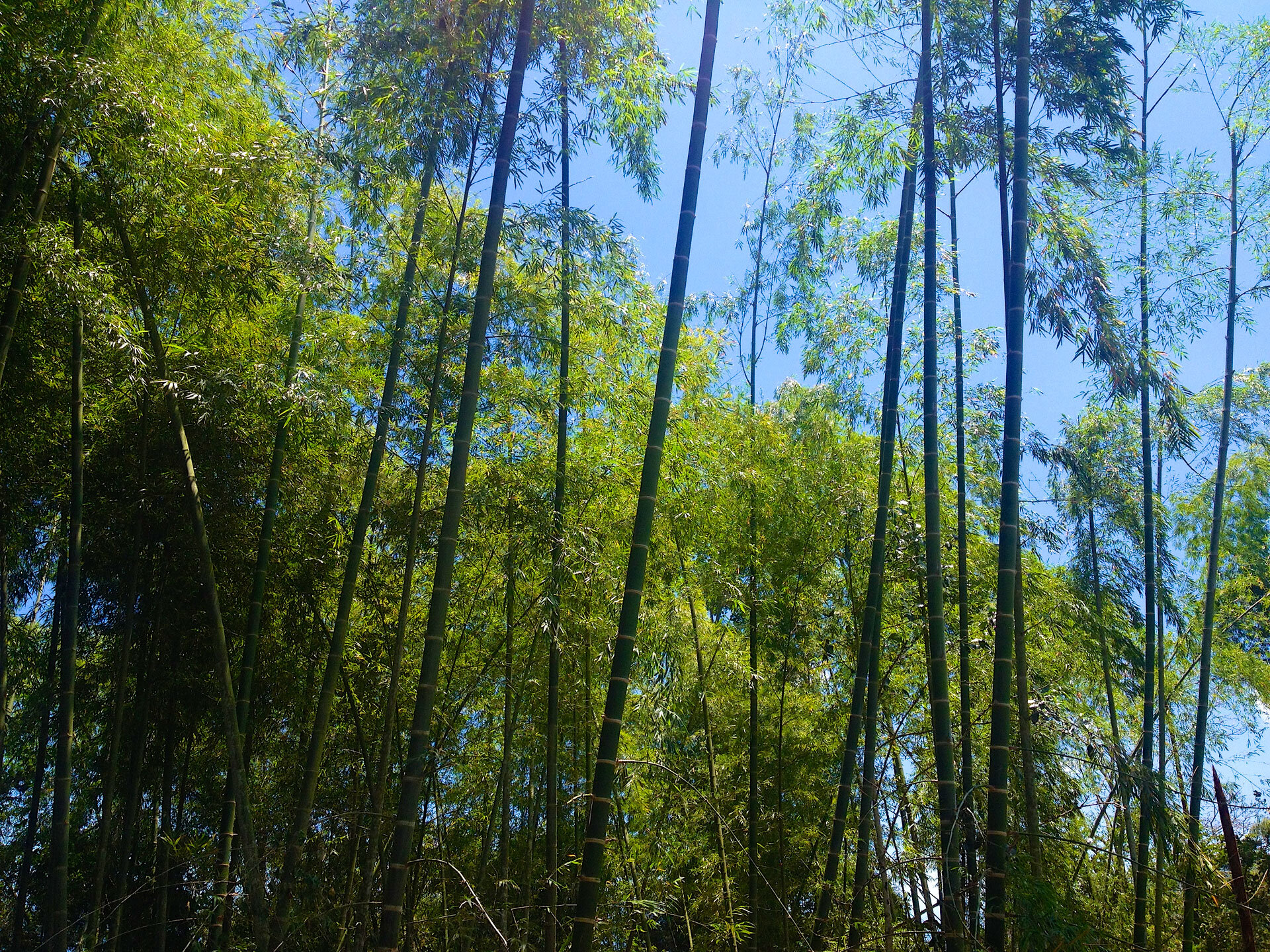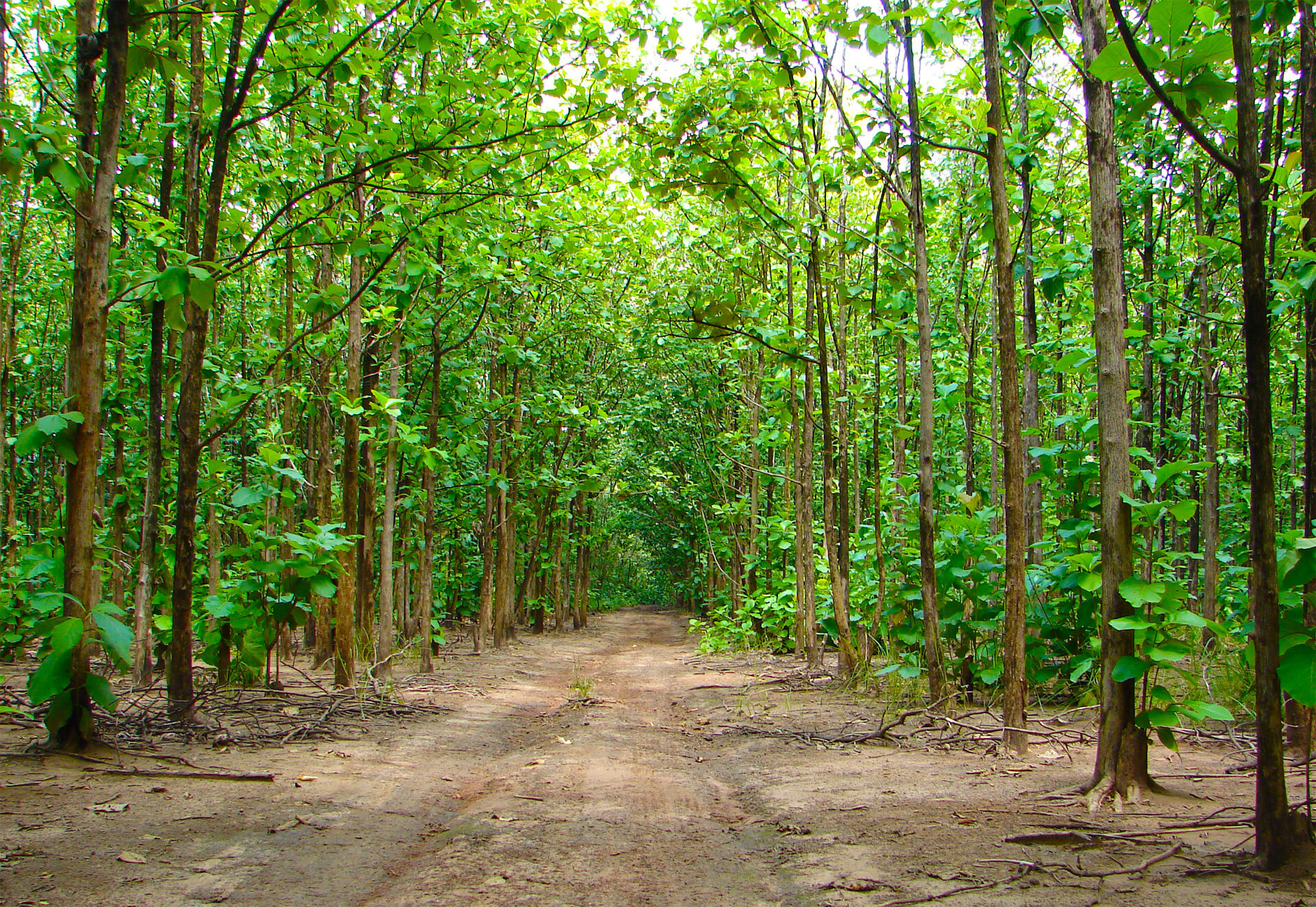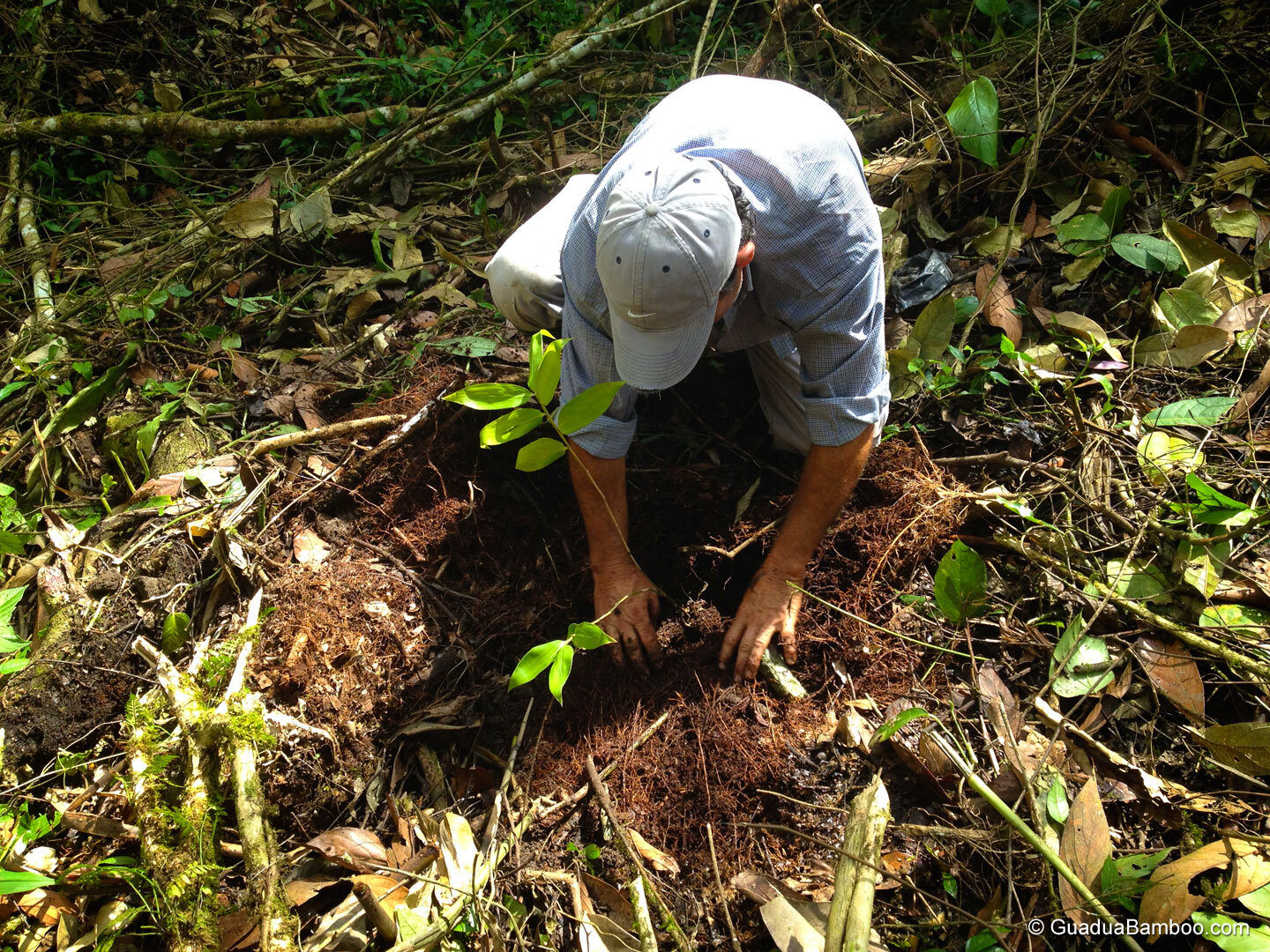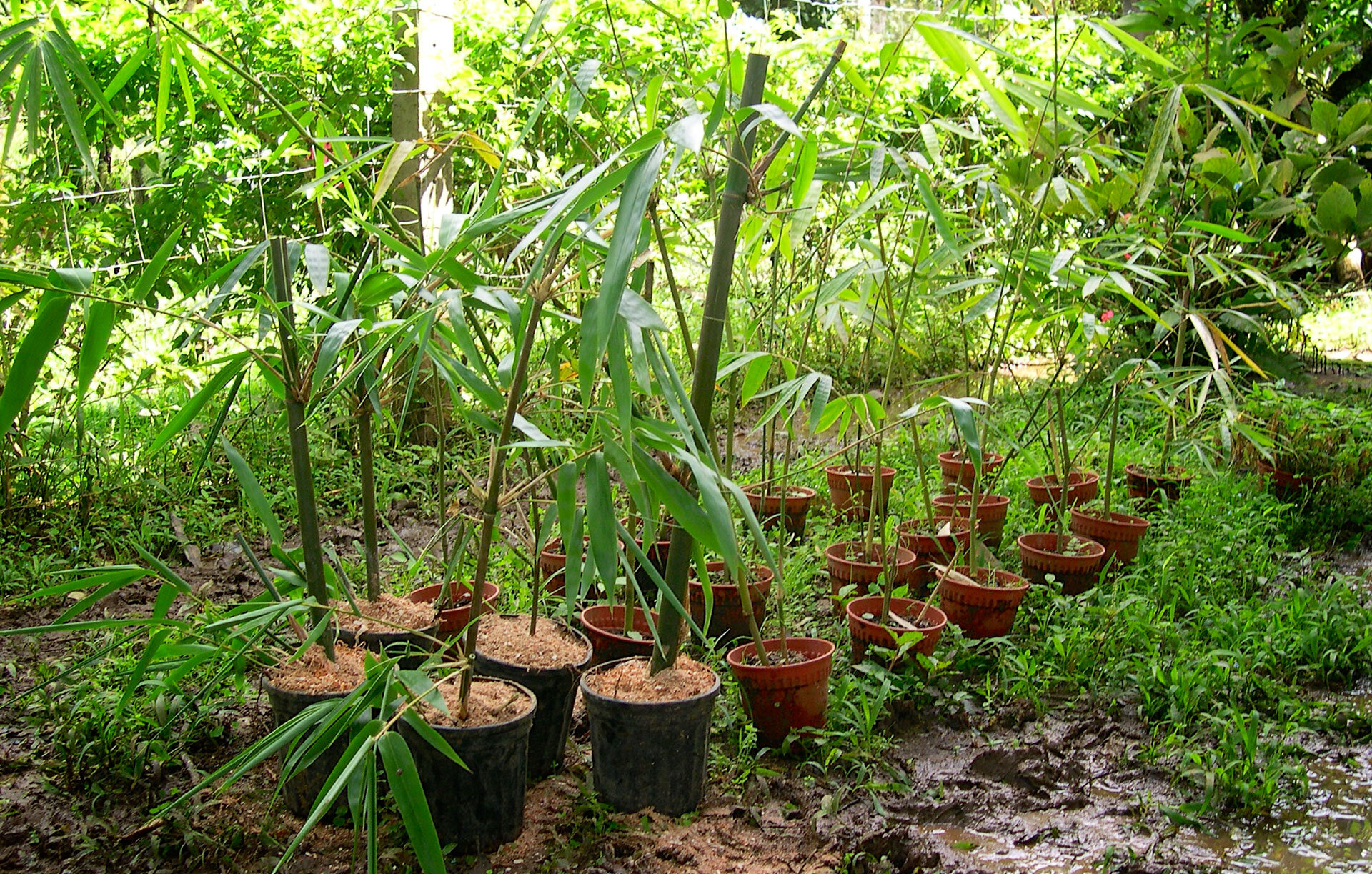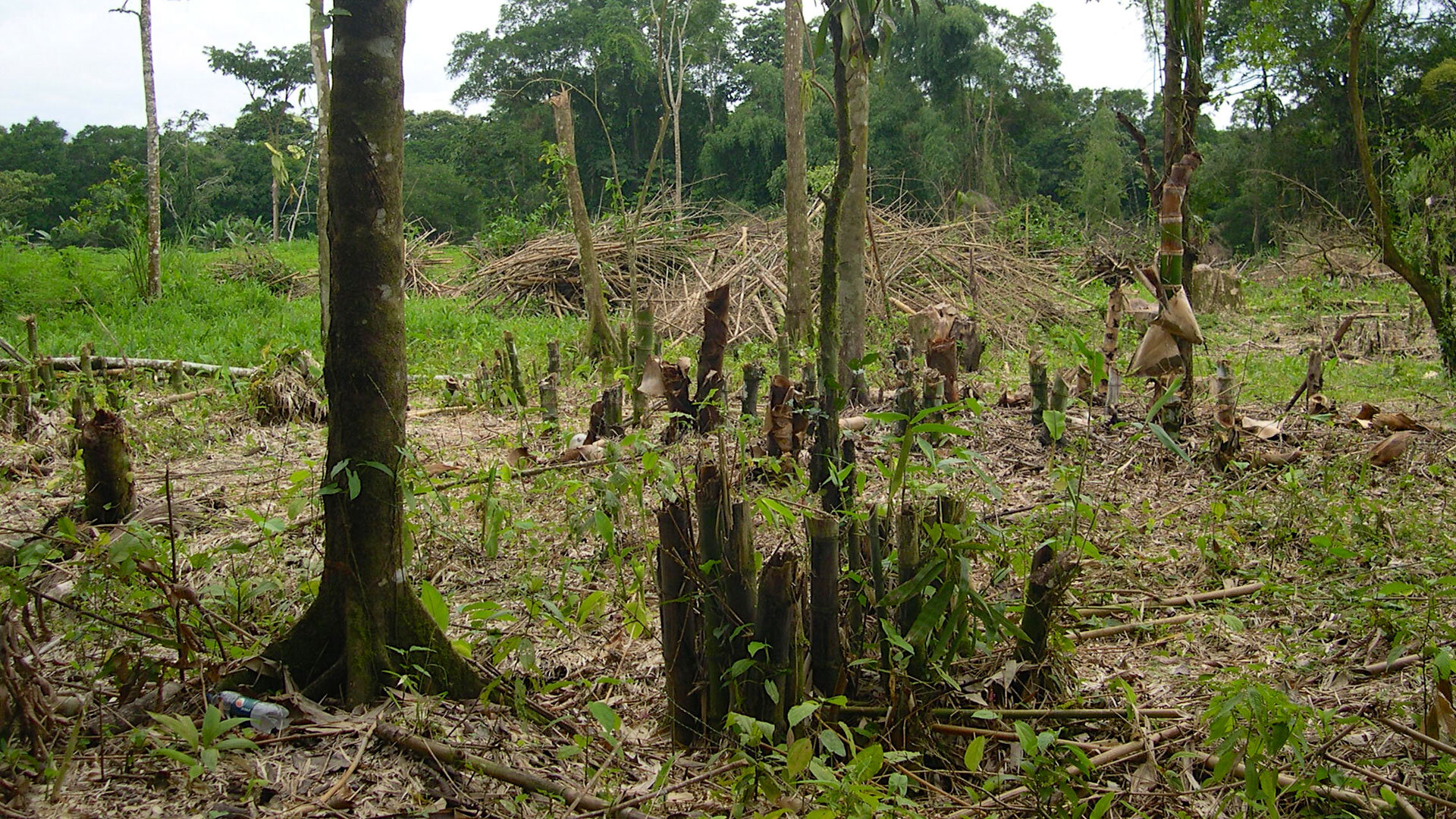Guadua Bamboo vs Teak Plantations
What is the Best and Safest Investment?
Teak plantations vs Guadua bamboo plantations, which of the two is the best and safest investment if it comes to reforestation and tree farming in the tropics?
First of all, let me say that with the following article we try to make a fair comparison, it is not our intention to criticize reforestation of any kind. We do want to show the differences between growing teak plantations or Guadua bamboo commercially and raise awareness for the latter.
We could have chosen other woods such as Melina or Eucalyptus, to compare with this giant timber bamboo, but since teak is a fast growing hardwood and the most popular among investors in Central and South America, it is the best suited wood to represent this comparison with Guadua bamboo.
Teak Plantation
Guadua Bamboo Plantation
The Essential Differences Between Teak and Bamboo
Teak (Tectona), is a genus of tropical hardwood trees in the mint family, Lamiaceae. Guadua is a neotropic genus of thorny giant clumping bamboo in the grass family, Poaceae.
Teak is native to South and Southeast Asia, mainly Bangladesh, Burma and Thailand, and is commonly found as a component of monsoon forest vegetation. In tropical America teak is introduced and cultivated for about 100 years. Guadua is native to tropical forests in Central and South America.
Teak grows up to 30-40 meters depending on it's age. Usually teak grown at commercial plantations are harvested at age 20-25 years and have an average height of 25 meters. Guadua grows up to 25-30 meters tall in 5-6 months, it is harvested at an age of 4-5 years, which is the time it takes for the stems to fully mature (harden).
Average diameter of a 20-25 year old teak tree is 30cm. The average diameter of Guadua is 10-17cm. The diameter of bamboo does not increases over time like regular trees (bamboo stems emerge in a fixed diameter).
Teak is one of the faster growing tropical hardwoods (half an inch per day), still, it takes 20 to 25 years to grow into ONE mature tropical tree to final harvest. Guadua grows up to 8 inches a day, or 5-6 months to grow into a full size stem (culm). ONE Guadua plant gives us more than 10 culms per year, and this on a continuous basis. When one culm is harvest, new ones will grow without having to replant.
Requirements for Optimal Growth
Good growth and high quality of teak trees is associated with deep, flat and well-drained alluvial soils rich in calcium. Sandy soil is considered to be the best soil texture for this tree. Teak fails to grow in soil with pH below 6.5. Guadua is also happiest in a sandy or loamy soil at a pH between 6.3 - 6.5. Soil dept is of less importance since the root structure is very superficial (50 cm).
Teak plantations prefer a moist, warm tropical climate, with a marked dry season of three to five months. Guadua prefers humid habitats of cloud forests and lowland tropical jungles, from sea level up to 4,300 meters altitude. Bamboo does not prefer long period of drought although they can easily adapt to it.
Teak in dry site conditions is usually associated with stunted growth. Very moist conditions may lead to faster growth but also to a thick sap wood and poor overall quality, including lower average density, less attractive color, poor texture and loss of strength. Therefore, it is not recommended to establish a teak plantation on the Caribbean side of Central America where there is no marked dry season. Guadua loves the Caribbean climate conditions.
Land Preparation and Weeding
Before planting, cleaning up exotic grasses and weeds is required for both Teak and Guadua plantations, because they choke out and kill baby trees or other native grasses and plants. After bamboo seedlings are planted, 4 weedings in the first year may be performed, but because of bamboo's rapid growth, it is not absolutely crucial for survival. Teak plantations do require regular clean ups; once every 1-2 months in the first 2 years after planting the seedlings.
Planting Material and Seeds
It is advisable to raise teak nursery seedlings after collecting fruits only from genetically superior plus trees. Fruits should be obtained from Forest Departments or Forest Development Corporations. Fruits obtained from such seed orchards will give better yield. One must be aware that in case of teak plantations any mistake in selection of planting stock may give a negative impact on the plantation which would be known after 10 years or more. So, selection of planting stock is the most important criterion in raising teak.
Teak Seeds
Guadua Seeds
Compared to most trees that flower on a yearly basis, Guadua and most bamboos set seed very rarely and die shortly after. In case of Guadua angustifolia, flowering occurs only once in 60-120 years. For that reason Guadua plants are propagated vegetatively.
Spacing and Planting Layout
The optimum spacing for planting teak is 2 x 2 m accommodating 2500 plants per ha. It can also be raised along with agricultural crops at a spacing of 4m x 4m or 5m x 1m.
The optimum spacing for Guadua is 5 x 5 m, this requires 400 plants per ha. Intercropping with for example tuber plants or beans is also possible in the first 1-3 years. Since many stems grow from one bamboo plant, a Guadua plantation will become very dense with 400 plants per ha in just 5 years.
Plantation Maintenance
Pruning: Teak rapidly puts on height as well as diameter. After the trees starting gaining height, the lower leaves must be pruned. The most valuable trees are those that grow straight and tall with no limbs in the trunk area. By pruning away all except the top 1/3 of the leaves, you create superior wood. Because teak grows fast, a plantation needs a lot of attention for the first 3 years. Guadua doesn't need any pruning to increase the quality of it's timber, but if you like to walk trough a guadua plantation, it is advisable to prune the lower branches because of their very nasty thorns.
Thinning: The thinning out phase of teak plantations consists of selecting the best trees, leaving them standing, and harvesting the slow growing and lesser quality ones. Timely thinning phases are necessary to expedite growth by diminishing competition among trees for light and nutrients. This way, with the first and following thinning phases, there will be an advance income prior to the final timber harvest. Guadua bamboo is harvested annually (say 20% of the standing stock) and will continue producing new culms throughout its life.
By increasing the inputs of fertilizers, irrigation and frequent thinning on teak plantations, it is possible to increase the rate of diameter growth. The increase in diameter growth is, however, dependent on increasing the size of the crown i.e. decrease in the number of trees per acre. In other words, one can have either lesser number of trees of higher girth or larger number of trees of lower girth. It has been observed that teak trees grown under irrigated condition grew faster but the sapwood content of trees increased, the wood became weak and wind damage became quite serious. A phenomenon of water blisters may also develop in teak trees grown under irrigated conditions. Such trees may appear quite healthy from outside but the inner heartwood may develop rot due to storage of excess water that increases the spread of fungi which may further damage the tree.
Neglect: Is the biggest and most serious risk with teak plantations. 25 years is a very long time, and it is easy to lose your enthusiasm (and maybe your financial resources). Currently there is a considerable amount of poorly grown teak entering the market because growers just stuck it into the ground and ignored it.
Risks and Hazards
Fire: Teak plantations need a marked dry season of 3 to 5 months for optimum growth which means forest fires can be a big issue. Guadua prefers very humid habitats so fire hazards are minimal. The fire resistance of green bamboo is also very good because of the high content of silicate acid. Filled up with water, it can withstand a temperature of 400°C while the water cooks inside. In the rare event fire does occur in a bamboo plantation, it can recover and continue shoot growth and development, after all, bamboo survived the Hiroshima atomic blast closer to ground zero than any other living thing and provided the first re-greening in Hiroshima after the blast in 1945.
Hurricanes: While hurricanes can cause serious damage to a teak plantation, bamboo plantations stay largely in tact. Its tremendous strength, flexibility and large underground root system make bamboo an excellent wind break.
Animals: Large animals can be a problem when teak trees are young, so you will need to make sure to keep the trees protected with a fence. After 3 years, teak will be sufficiently tall to possibly use young cattle or sheep to keep the weeds down. A bamboo plantation should be fenced at all time to prevent entry of browsing stray animals like cattle, carabao, and goat, which may feed on young shoots and leaves. These also trample and damage the plants. Rodents also feed on emerging shoots and bore holes on the young culms. If these rodents are not controlled, the damage to the plantation becomes serious, thus reducing the production of poles.
Pests: Teak is very sensitive to pests (insects, disease, etc.). Professional teak plantation owners often have a forestry engineer on the payroll to detect and treat these problems. Insects and fungal diseases may also occur on a bamboo plantation, however very few of these pests and diseases has ever caused a serious problem in nurseries, plantations, or natural stands.
Theft: There is obviously a bigger risk of theft at bamboo plantations than at teak plantations due to the smaller size and much lighter weight of bamboo.
Sustainability and Carbon Fixation
Generally speaking, bamboo produces 35% more oxygen than conventional tree species.
Bamboo has several advantages over tree species in terms of sustainability and carbon fixing capacity. Available studies conclude that bamboo biomass and carbon production may be 7-30% higher compared to the fast growing wood species. For instance Guadua bamboo has been measured at a total above ground biomass 287 t/ha with a mean annual production of around 47.8 t/ha/year, almost twice that of the Eucalyptus clones. Interestingly, the total biomass of mature Guadua at 6 years is in fact higher than that of teak at 40 years: 149 t C/ha versus only 126 t C/ha for teak. In other word Guadua produces 7 times more biomass and carbon fixation over a period of 40 years, compared to teak under the same conditions.
Besides higher biomass, bamboo has other advantages over wood as a carbon stock. Unlike woody crops bamboo offers the possibility of annual selective harvesting and removal of about 15-20% of the total stock without damaging the environment and stock productivity. Over 90% of bamboo carbon can be sequestered in durable products such as boards, panels, floors, furniture, buildings, cloth, paper and activated charcoal. These products have a very long life span and may retain carbon for several decades.
Already with the presently available technologies bamboo production for energy use may well make a significant contribution to the current and future energy needs of the developing world. Utilization of renewable fuel from bamboo can save vast natural forest resources and non-renewable fossil fuel such as mine coal, oil and gas.
Market Potential for Bamboo and Teak
Due to deforestation, the world is seeing a decreasing supply of tropical woods while demand continuous to grow. Increasing ecological pressure has also caused many of the industrialized nations to ban the importation of tropical woods, unless cut from sustainable sources.
In the last 15-20 years, bamboo has emerged as a valuable substitute for conventional woods. Virtually every product which is now produced from wood can be effectively produced from bamboo; including panels, boards, flooring, roofing, pulp and paper, fabrics and cloth, charcoal, oil, bio-fuels, gas and even vegetables (bamboo shoots). These applications have been well studied and are widely known.
Cost and Revenues from Bamboo and Teak Plantations
The costs and revenues for a bamboo or teak plantation will vary depending on the project type and location, but it is reasonable to assume that bamboo investments are not less profitable than those involving conventional timber tree crops. In fact, there are clear indications that bamboo plantations can be more profitable compared to other tropical trees, especially because of its easy handling, modest capital investment and low maintenance cost.
Guadua bamboo plantations can start generating income in the 5th year after planting and every single year after that, while teak plantations take at least 20-25 years to generate income.





